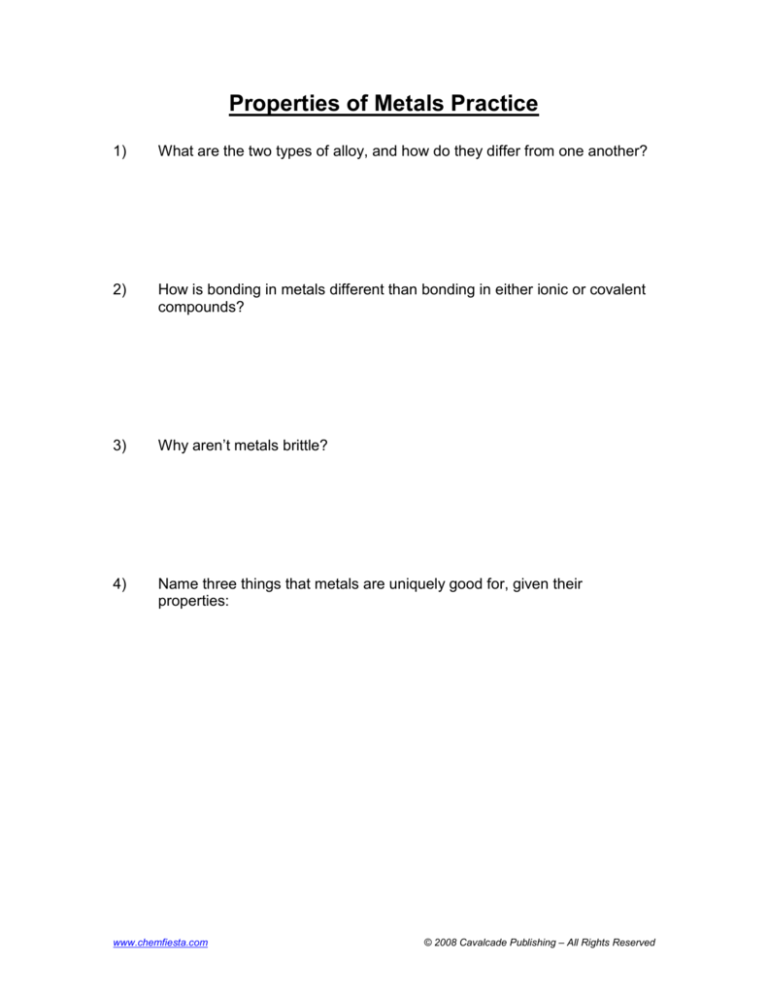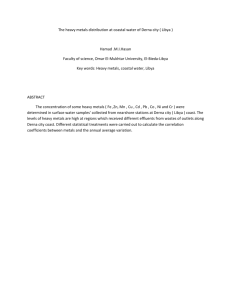
Properties of Metals Practice
1)
What are the two types of alloy, and how do they differ from one another?
2)
How is bonding in metals different than bonding in either ionic or covalent
compounds?
3)
Why aren’t metals brittle?
4)
Name three things that metals are uniquely good for, given their
properties:
www.chemfiesta.com
© 2008 Cavalcade Publishing – All Rights Reserved
Properties of Metals Practice - Answers
1)
What are the two types of alloy, and how do they differ from one another?
Interstitial alloys are alloys in which one element takes up the spaces
between the atoms of the other metal. Substitutional alloys are
alloys in which the atoms of one element in the lattice are replaced
by atoms of other elements.
2)
How is bonding in metals different than bonding in either ionic or covalent
compounds?
In metals, the bonding electrons are delocalized among all of the
atoms. As a result, the most common analogy for discussing
metallic bonding is the “electron sea theory” in which the nuclei are
islands of positive charge that are floating in a big ocean of electrons
that hold them all together.
3)
Why aren’t metals brittle?
The delocalized bonding in metals allows the metals a greater degree
of freedom of motion, which allows them to shift places without
shattering the whole material.
4)
Name three things that metals are uniquely good for, given their
properties:
Some examples:
The malleability of metals make it handy for making springs
(or other things that need to be bent).
The ductility of metals makes them useful in making cables for
holding up very high television and radio towers, as well as
suspension bridges.
The conductivity of metals makes them useful for making
power lines and lightning rods.
The strength of metals makes them useful in the manufacture
of large buildings.
The shininess of metals makes them good for making mirrors.
www.chemfiesta.com
© 2008 Cavalcade Publishing – All Rights Reserved







